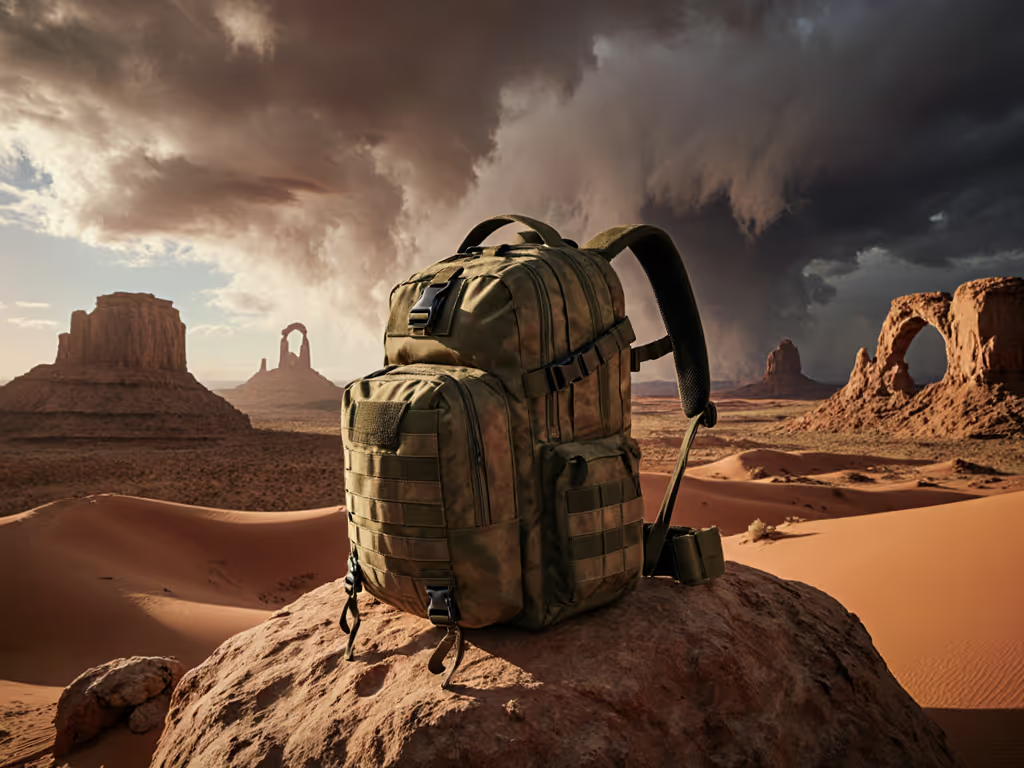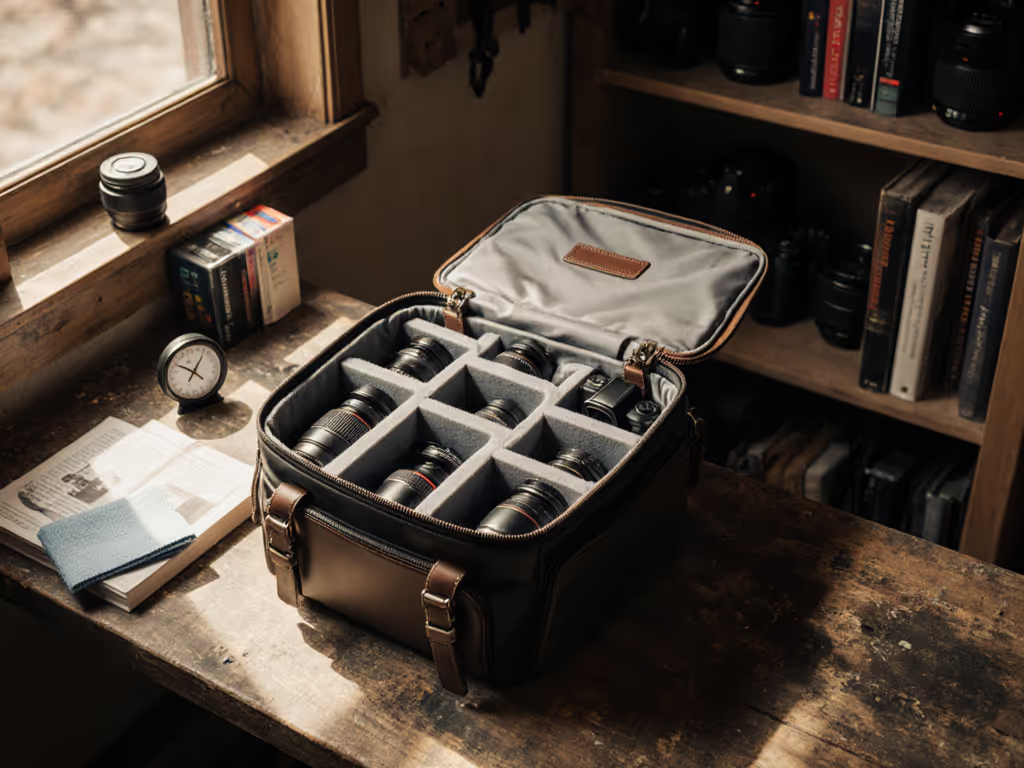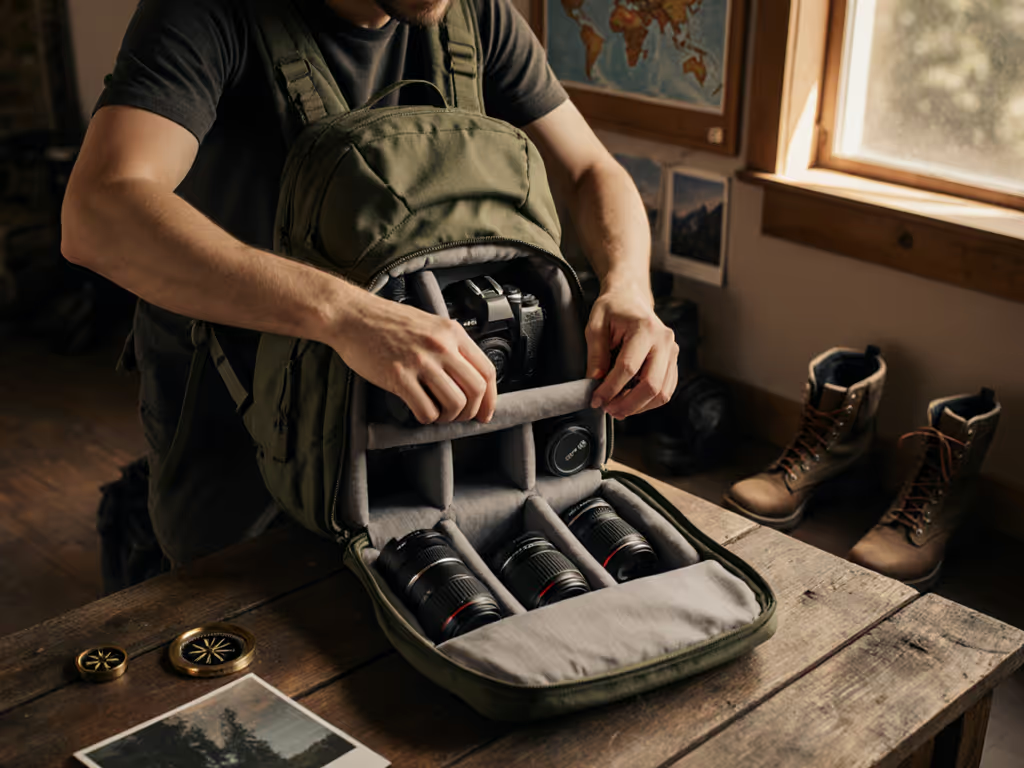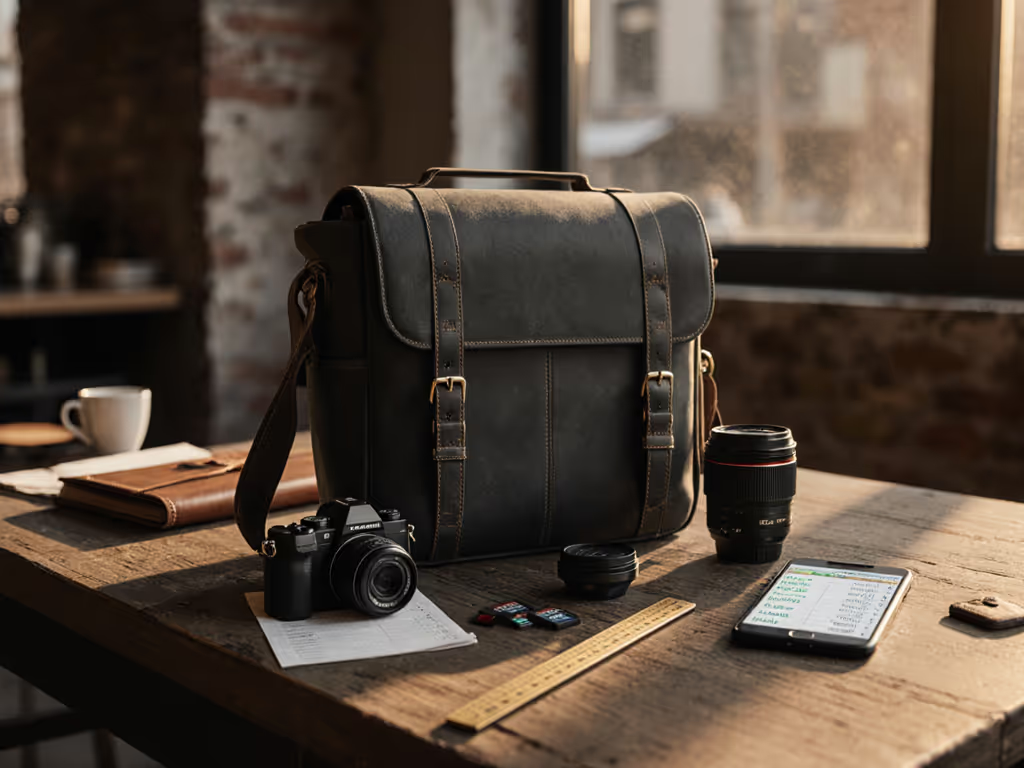
Extend Camera Bag Life: Cleaning Guide
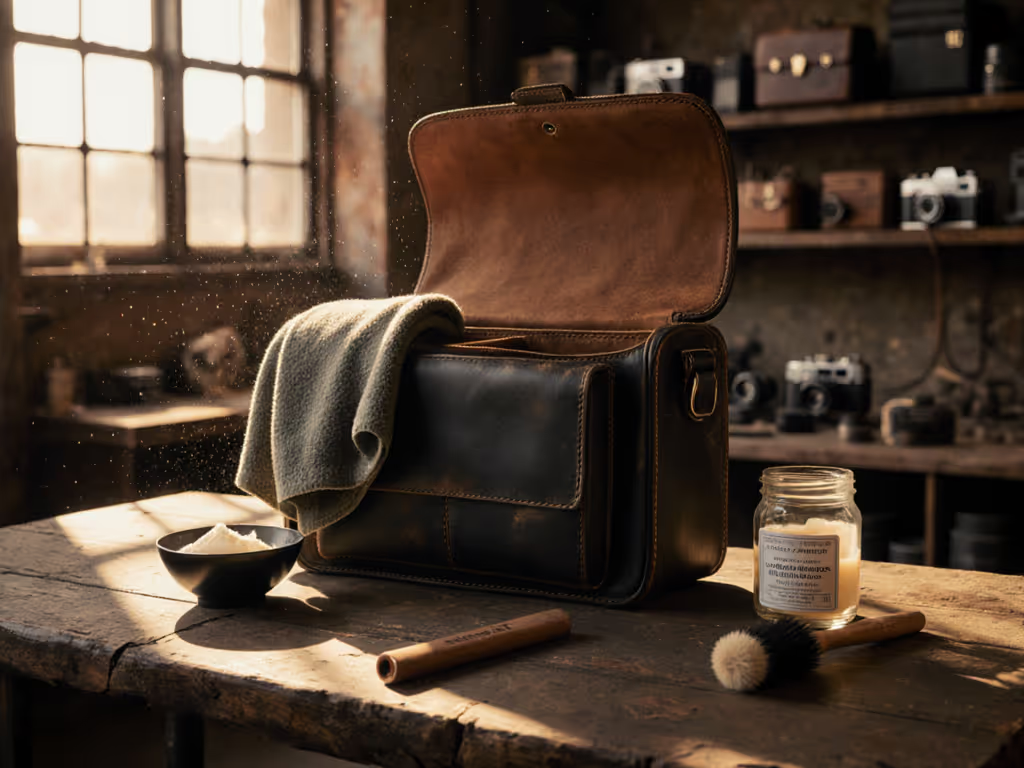
As a camera bag owner who relies on your gear for income or creative expression, you know your camera bag is more than just storage, it is your mobile command center. Properly cleaning your camera bag is not just about appearance; it is about protecting your investment and keeping your gear safe season after season. In this guide, I will walk you through a simple maintenance system that extends the longevity of camera gear bags without adding complexity to your workflow.
FAQ Deep Dive: Camera Bag Cleaning & Longevity
Why should I care about cleaning my camera bag when it's "just a bag"?
Your camera bag is your first line of defense against environmental damage to expensive gear. Dust, sand, and moisture that accumulate in zippers and seams gradually degrade hardware and fabric integrity. When I started my career, I treated bags as disposable, until I realized my "pro" bag with twenty pockets was actually costing me more in replacements than a well-maintained bag would ever cost upfront. Consistent cleaning creates a decision gate that separates gear graveyard casualties from reliable workhorses. Think of it as preventative healthcare for your mobile studio.
What simple tools do I need for proper cleaning? (No specialty kits required)
The beauty of effective maintenance is its simplicity. You need only what you likely already own:
- A soft microfiber cloth (the kind you use for lenses)
- A small soft-bristled brush (an old toothbrush works perfectly)
- Mild soap or leather-safe cleaner (optional for stubborn spots)
- A handheld vacuum with brush attachment (optional but helpful for fabric bags)
- Compressed air (the kind used for keyboards)
Start small, fit right, build the system methodically. You don't need expensive products to maintain what you already own.
The key is using what you have before buying specialized gear. I have seen photographers successfully clean bags with just a dry toothbrush and microfiber cloth during lunch breaks between shoots, no elaborate setup required.
How do I clean different bag materials without causing damage?
For Leather Camera Bags:
- Empty completely and shake out loose debris
- Use a dry soft brush to remove surface dust from seams and corners
- For stubborn grime, lightly dampen your microfiber cloth (never saturate)
- Wipe gently in circular motions (never scrub)
- Air dry away from direct heat or sunlight
- After completely dry, apply leather conditioner sparingly to maintain flexibility
For Fabric/Nylon Bags:
- Empty and shake out debris
- Use a soft brush or handheld vacuum to remove particles from pockets and seams
- For stains, spot-clean with a barely damp cloth and mild soap
- Never machine wash unless explicitly stated by the manufacturer
- Air dry completely before repacking gear
The critical difference is moisture tolerance, leather requires nearly dry cleaning methods while fabric can handle slightly more moisture. When in doubt, start drier than you think you need to be.
How often should I clean my camera bag?
Your cleaning schedule depends entirely on your shooting environment:
- Studio/light use: Clean interior every 2 months, exterior every 4 months
- Outdoor/event work: Clean interior monthly, exterior every 6 weeks
- Extreme environments (beach, desert, rain): Clean immediately after each use
I use this simple decision tree:
Did you shoot in challenging conditions today? → YES → Clean tonight
↓ NO
Did debris accumulate in pockets or seams? → YES → Clean this weekend
↓ NO
Has it been more than 60 days since last cleaning? → YES → Schedule cleaning now
Regular maintenance prevents the need for repairs down the line. I have watched bags that received consistent care outlast multiple "heavier duty" replacements that were neglected.
What common mistakes should I avoid when cleaning my camera bag?
Nearly every bag repair I have seen resulted from one of these four mistakes:
- Using household cleaners: Dish soap, Windex, or vinegar solutions strip protective coatings and damage stitching
- Over-wetting: Moisture trapped in seams causes mold and zipper corrosion
- Ignoring zippers: Sand and grit in zippers are the #1 cause of zipper failure
- Storing wet: Even slightly damp bags develop odors and mildew within 48 hours
When cleaning zippers specifically, gently brush both sides with a soft toothbrush, then run the zipper back and forth several times to work out debris. For stubborn grit, a tiny bit of zipper lubricant (made specifically for bags) can restore smooth operation.
How does proper cleaning relate to my bag's weather protection?
Regular cleaning actually maintains your bag's weather resistance. For a data-backed look at how different bags perform in storms, see our real rain test results. Dirt and oil buildup in fabric weaves compromises waterproofing treatment effectiveness. For fabric bags, periodic cleaning followed by reapplication of DWR (durable water repellent) spray restores performance. Leather bags naturally resist water when properly conditioned.
I learned this the hard way during a rainy wedding shoot, my neglected bag allowed moisture through seams that regular cleaning would have kept clear. Now, I consider cleaning part of my weatherproofing routine, not separate from it.
Can regular cleaning prevent the need for major repairs later?
Absolutely. Most camera bag repair services address issues that regular cleaning would prevent:
- Zipper failures from grit accumulation
- Mold and mildew from trapped moisture
- Stitching damage from dirt abrasion
- Stiffening leather from lack of conditioning
A five-minute cleaning routine after each shoot can add 3 to 5 years to your bag's lifespan. That is not just cost savings, it is maintaining confidence to shoot in conditions where you would otherwise worry about gear safety.
How does bag maintenance affect my actual shooting workflow?
When your bag functions reliably, it becomes invisible to your workflow. Clean zippers open smoothly when you need rapid access. Organized compartments let you find gear without fumbling. You stop worrying about whether your bag will protect your gear and start focusing on creating.
The physical confidence of knowing your bag will not fail you translates directly to creative confidence. I have watched clients transform from hesitant shooters to decisive creators once they resolved their "bag anxiety" through proper maintenance.
What's the single most important cleaning habit I should start today?
Empty your bag completely after each use and give it a 30-second shake-out. This simple practice removes 80% of the debris that leads to long-term damage. Make it part of your standard gear check-in routine, just like backing up memory cards.
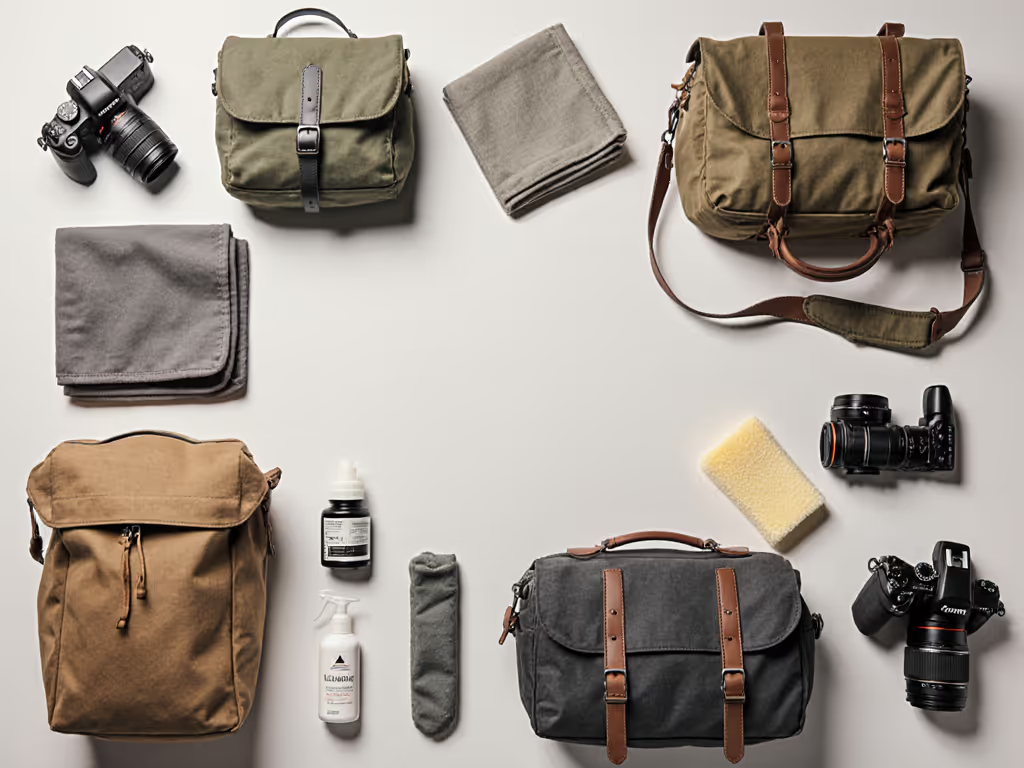
How does proper maintenance support the longevity that camera gear bags promise?
Manufacturers advertise the longevity of camera gear bags based on ideal conditions, but real-world durability depends on your maintenance habits. A regularly cleaned bag maintains its structural integrity, keeps protective coatings effective, and prevents the slow degradation that makes bags feel "worn out" before their time.
Think of your bag like a cast-iron skillet, proper care makes it better with age rather than disposable after a few seasons. The photographers I admire most do not chase the latest bag models; they maintain their workhorses until they have genuinely outlived their usefulness.
Final Thought: Your Bag as a Long-Term Creative Partner
Your camera bag is not just gear, it is the silent partner that enables your creativity under pressure. By implementing these simple, regular maintenance habits, you transform it from a potential point of failure into a reliable ally that grows with your skills. Every minute spent caring for your bag saves multiple minutes (and potentially missed shots) dealing with preventable failures.
When your equipment fades into the background of your workflow, that is when your creativity truly shines. You gain the confidence to shoot without second-guessing your gear, knowing your bag will perform exactly as needed when the moment demands it.
Start small, fit right, build the system methodically. Your perfect bag is not the one you replace every year, it is the one that keeps delivering when you need it most.
Ready to explore how specific bag features impact your shooting workflow? Check out our deep dive on matching bag geometry to your body type and shooting style, because the right fit is not just comfortable, it is transformative for your creative process.

